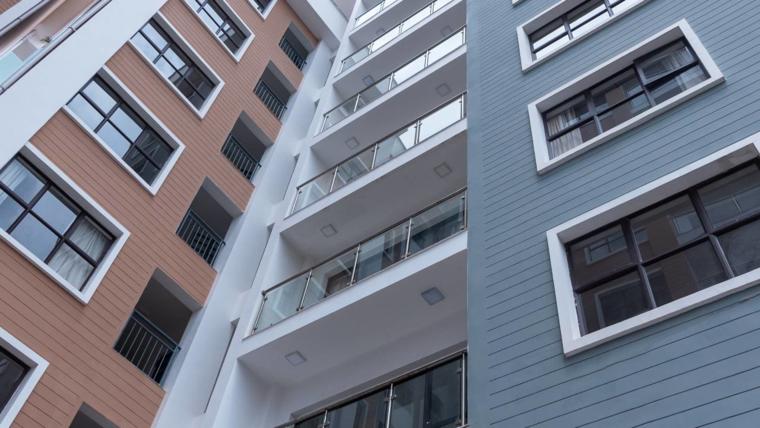
Security is an important aspect of any co-living space. Tenants and guests want to feel safe and secure during their stay, and building managers need to ensure that they do what they can to ensure that their buildings are protected from intruders. One way to do this is by using the right digital door locks.
The Office for National Statistics puts the average cost of a residential burglary in the UK at £3,030, and one happens in the UK every 106 seconds. Considering the increase in interest in co-living spaces and naturally you can understand how the chance of being burgled increased, also though it doesn’t have to. With the right keyless entry system, residents in co-living buildings can be assured that they are protected.
There are several different types of door locks available, each with its own set of features and benefits. In this article, we will explore the different types of door locks and security systems available for co-living spaces.
Traditional Locks
Traditional locks are the most basic type of door lock. These locks require a key to open and close the door. Traditional locks are easy to install, and they are generally very reliable. However, they can be easily picked or manipulated, making them less secure than some of the more advanced lock systems.
Keycard Locks
Keycard locks are an upgrade from traditional locks, and they are more secure. These locks require a card or key fob to open and close the door. Keycard locks are convenient because they eliminate the need for a physical key, and they can be easily programmed to grant access to certain guests for a limited time. These locks can also be easily deactivated by the building administration if the card or fob is lost or stolen.
RFID Locks
RFID locks are similar to keycard locks, but they use radio-frequency identification technology to grant access. These locks are even more secure than keycard locks because they are more difficult to hack or manipulate. RFID locks are also convenient because they can be programmed to grant access to certain visitors for a limited time.
Smart Locks
Smart locks are a newer type of digital door lock that uses Bluetooth technology or RFID to grant access. These locks can be easily controlled using a smartphone app, and they can be programmed to grant access to certain guests for a limited time. Smart locks are also convenient because they can be easily deactivated if a smartphone is lost or stolen.

▶ Why has keyless access control become more popular for co-living spaces?
Keyless entry access is becoming increasingly popular in the co-living and co-working spaces and for good reason. They add an extra layer of security ensuring that residents have peace of mind that they are protected.
Keyless entry systems provide the following in co-living spaces:
Convenience: Keyless door systems offer a higher level of convenience for both residents and staff. Guests no longer have to worry about keeping track of a physical key or card, which can be lost or misplaced. Instead, they can simply use their smartphone or other device to access their room. This saves time and eliminates the need for guests to visit the front desk to obtain a physical key.
Improved security: Keyless entry control systems are more secure than traditional lock and key systems. With a keyless system, residents are granted access to their room through a unique code or by means of a keycard. This makes it much more difficult for unauthorised individuals to gain access to the building rooms and facilities.
Increased efficiency: Keyless door entry systems can also improve staff efficiency in co-living buildings. With traditional lock and key systems, staff must physically change locks and issue new keys when a resident loses their key or moves out. With a keyless system, this can be done electronically, saving time and reducing the need for staff to physically handle keys.
Flexibility: Keyless entry systems offer more flexibility than traditional lock and key systems. Building staff can easily grant access to specific rooms for specific periods of time, making it easier to accommodate cleaning staff or contractors that might need to do maintenance jobs.
▶ What type of locks are used in co-living spaces?
Co-living spaces often use a combination of traditional key locks and modern electronic locks. Traditional key locks provide a simple and reliable solution, while electronic locks offer convenience and additional features like keyless entry, remote control, and integration with smart home systems.
▶ How secure are the locks in co-living spaces?
The security of locks in co-living spaces depends on the specific locks used. High-quality locks with advanced features, such as anti-pick and anti-bump mechanisms, can provide a high level of security. Property managers should ensure that locks meet industry standards and are sourced from reputable manufacturers to ensure optimal security.
Authorised residents are provided with unique credentials, such as PIN codes or key cards which they use to unlock the doors. These systems often have a central control panel that manages access permissions and logs access events.
▶ Are digital locking systems secure in co-living spaces?
Digital locking systems can offer a high level of security in co-living spaces when implemented properly. They often use advanced encryption and authentication methods to protect against unauthorised access.
▶ How are access permissions managed in digital locking systems?
Access permissions for co-living spaces can be managed through a central control panel or software. Property managers or administrators have the ability to grant or revoke access privileges for residents, add or remove residents from the system, and schedule temporary access for guests or service personnel.
▶ Can residents change their access credentials in digital locking systems?
Depending on the system’s configuration, residents may have the ability to change their access credentials. This can be done through the central control panel or by following specific procedures provided by the property management. For property managers, it’s important to strike a balance between allowing residents to have control over their access and maintaining security protocols by only allowing certain staff the ability to update credentials.
▶ What happens if a resident loses their access credentials with a digital locking system?
If a resident loses their access credentials, they should report it to the property management immediately. The management can then deactivate the lost credentials and issue new ones to maintain security. In some cases, temporary measures may be taken, such as providing the resident with a backup access method until new credentials can be issued.
▶ Do digital locking systems comply with relevant safety and regulatory standards?
There are certain functions and standards that digital locking system need to have to comply with relevant safety and regulatory standards specific to the region and the co-living space, such as the system from SimonsVoss. It’s important for property managers to ensure that the chosen digital locking systems meet the necessary certifications and comply with applicable building and safety codes.
Keyless door entry systems offer many benefits and advantage for co-living spaces. They are more convenient, secure, efficient, and flexible, and can enhance the overall experience of tenants. As technology continues to evolve, it is likely that access control systems will become even more prevalent in the industry. SimononsVoss offers an all-round solution in keyless entry with the System3060, perfect for co-living spaces. Contact our access control experts for more information on how these systems can benefit your industry.
